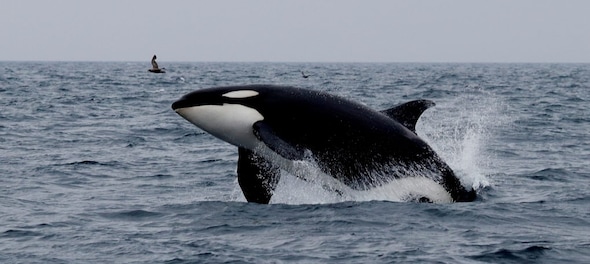
Last month, Iceland announced its plans to end whale hunting from 2024. The fall in demand for whale meat following the resumption of whaling in Japan as well as the pandemic are said to be among the reasons. But a 15-year-long campaign, ‘Meet us, don’t eat us’, largely led by Icelanders and local whale-watching companies, is believed to have played a crucial role in moving towards the decision.
Whale hunting has been in practice in Iceland since the early 1600s. Icelandic whalers hunted endangered fin whales as well as minke whale for meat. The fin whale meat was exported to Japan while most of the minke whale meat was served to tourists in Iceland.
Iceland had stopped commercial whaling in 1985 and scientific whaling four years later but commercial whaling resumed in 2006. An annual quota of 209 fin whales and 217 minke whales to be killed was introduced, which is still in place.
However, since the practice resumed, an association of local whale-watching companies, led by the International Fund for Animal Welfare (IFAW) and IceWhale (the Icelandic Association of Whale Watchers), has fought for its suspension.
They raised the slogan “Meet us, don’t eat us” to discourage whale meat consumption while promoting whale-watching.
Whale is not considered a delicacy among Icelanders, said Arni Finnsson, chair of the Iceland Nature Conservation Association, who worked on the campaign, in a Guardian report.
Only about 2 percent of Icelanders regularly eat it, the IFAW said. The biggest chunk of minke whales goes to the 2 million annual tourists who think of it as an Icelandic speciality.
In 2009, the IFAW launched one of the country’s most successful petitions asking people to sign a declaration that they would not eat whale meat. It currently has 175,000 signatories.
The campaign sent volunteers to restaurants to urge them stop serving the animal in 2011. Currently more than 60 restaurants are labelled as “whale friendly”. The campaign successfully cut whale meat consumption by tourists by three-quarters.
Meanwhile, whale watching has become a booming business. One in five tourists in Iceland takes a whale-watching trip.
According to Belén García Ovide, founder of Ocean Missions, an Icelandic non-profit not involved in the campaign, ‘Meet us, don’t eat us’, has had a big influence on the government’s approach and proved that a whale that is alive has more economic benefits than a dead whale.
However, whale-watching can have negative consequences as well. Vessels can impact the behaviour of whales making them to dive longer and deeper and change swimming direction, presumably to avoid the vessels. Scientists are observing if whales get stressed by tourist vessels, by measuring their cortisol levels and monitoring behaviour.
Icelandic whale-watching companies have created a code of conduct which includes not making sudden noises, approaching animals gradually and to take turns with other boats. But there is no legal requirement to follow this voluntary code unlike in other whale-watching destinations such as New Zealand or Canada.
Check out our in-depth Market Coverage, Business News & get real-time Stock Market Updates on CNBC-TV18. Also, Watch our channels CNBC-TV18, CNBC Awaaz and CNBC Bajar Live on-the-go!


BJP's Hindi heartland dominance faces test in phase 3 polls
May 2, 2024 9:14 PM
Lok Sabha Election: Re-elections at a Ajmer booth after presiding officer misplaces register of voters
May 2, 2024 4:54 PM

